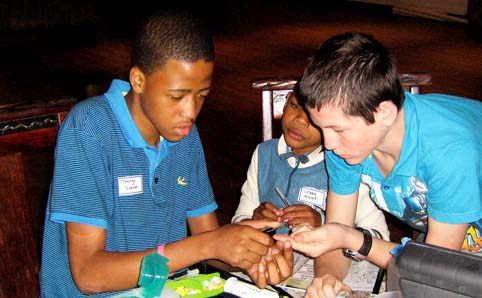 |
|
Young diabetes patients.
Photo: Supplied
8 May 2012
|
Children with diabetes often think they are the only ones who live with this condition. For this reason, the Department of Pediatrics and Child Health from the UFS, in cooperation with our Department of Nutrition and Dietetics, annually offers a camping weekend in Bloemfontein for young diabetic patients.
This fun-filled yet informative weekend was held at Emoya Estate in Bloemfontein recently. This is the fourth year that it has been held. During the weekend, the children learnt how to be a “child” along with other children.
“Children with diabetes have many emotional issues that they must work through,” says Dr Ute Hallbauer of the Department of Pediatrics and Child Health.
“Diabetes is a daily challenge for these children. During the camp, we try to make the children feel special and teach them how to take care of themselves.”
Twenty-six children between the ages of 9 and 14, who receive treatment in the public and private sector, attended the camp this year.
Dr Hallbauer says children as young as 12 months and even younger can be diagnosed with diabetes.
“They usually have Type I diabetes. This autoimmune disease destroys insulin producing cells in the pancreas. Thus the young children are insulin dependent and they have to, depending on their treatment, inject themselves daily. They must also test their blood sugar levels daily.”